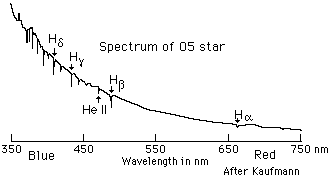Joe L wrote:Is it just me, or is the color-enhancement on a lot of recent astronomical photos *really* over-the-top?
You and I look at these things differently, Joe, since I love this color enhancement.
However, I must point out that the colors are real, just hard or impossible for us humans to see with the naked eye, or when we look at this part of the sky through a telescope.
I so rarely hear people complain about pictures of emission nebulae, where the emission nebulosity is red. The truth is that the emission nebulosity
is red, but the wavelength of Ha light is 656 nm, which is far into the red part of the spectrum, where the sensitivity of the human retina is low. Also the surface brightness of most emission nebulae is also low. The fact is that it is impossible for humans to see the red colors of emission nebulae with the naked eye.
No emission nebula in the sky, not even the Orion Nebula, looks red to the naked eye or when seen through a telescope.
What about the blue reflection nebulae? They, too, are almost always faint, and because of that their blue color is also impossible for us to see. However, many reflection nebulae are intrinsically very blue. This is particularly true of reflection nebulae surrounding hot blue stars, which is the case of the reflection nebulae in today's APOD.
What about O- and B-type stars? Are they really blue? Yes, they are, although they emit light of all the colors of the rainbow.
Here on the left you can see the spectrum of an O-type star. Blue starlight has a wavelength of about 450 nm. Red starlight has a wavelength of about 650 nm. As you can see, the O-type star emits a lot more 450 nm light than 650 nm light. Therefore the star is blue. B-type stars too, particularly B0, B1 and B2-type stars like Pi and Delta Scorpii, also emit a lot more blue than red light.
As a matter of fact, it
is possible to spot the bluish color of some stars. Personally I have seen O-type star Lambda Orionis look obviously blue through a telescope, and other O- and B-type stars have looked blue to me, too. But few if any stars look obviously blue to the naked eye.
So this image does not so much enhance the color of the nebulosity as shows us what it would look like to us if the sensitivity of our eyes was greater.
Ann
 Scorpius in Red and Blue
Scorpius in Red and Blue